BUTTERFLY VALVE
WHAT IS A BUTTERFLY VALVE
A butterfly valve is a type of flow control device used to regulate or isolate fluid flow through a pipe. It consists of a rotating disc, known as the butterfly, which is mounted on a rod. When the valve is fully open, the disc is turned parallel to the flow of fluid, allowing for almost unrestricted flow. When the valve is closed, the disc is rotated so that it completely blocks off the flow path.
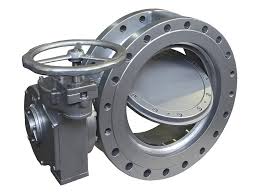
Key Features of Butterfly Valves
- Compact and Lightweight: Butterfly valves have a compact design and are lighter than some other types of valves, such as ball or gate valves, making them easier to install and requiring less support.
- Quick Operation: The disc rotates 90 degrees to open or close, providing a quick action that can be beneficial in both manual and automated operations.
- Cost-Effective: Generally, butterfly valves are less expensive than other valve types, especially for large-diameter pipes.
- Versatility: Suitable for a wide range of applications, handling liquids, gases, and slurries. They can be used in various industries, including water and wastewater treatment, chemical processing, and HVAC systems.
Types of Butterfly Valves
- Concentric Butterfly Valves: Also known as rubber-lined butterfly valves, these have a resilient rubber seat with a metal disc. Suitable for lower pressure and temperature applications.
- Double Offset Butterfly Valves: Designed with two offsets to reduce wear on the valve seat and disc during operation, enhancing longevity and performance. Suitable for higher pressure and temperature applications.
- Triple Offset Butterfly Valves: Feature a third offset that creates a cone-shaped sealing surface, allowing for metal-to-metal sealing, minimal wear, and use in high temperature and pressure applications.
Operation
Butterfly valves can be operated manually with a handle, or they can be actuated pneumatically, electrically, or hydraulically for automatic operation. The choice of operation mode depends on the application’s requirements, including the need for precise control, the size of the valve, and the operating environment.
Applications
Butterfly valves are versatile and can be used across a wide range of applications, including:
- Isolating and Regulating Flow: In piping systems for water supply, wastewater treatment, and industrial processes.
- HVAC: For regulating airflow in heating, ventilation, and air conditioning systems.
- Chemical Processing: For controlling the flow of various chemicals and slurries.
In summary, butterfly valves are a popular choice for many flow control applications due to their compact design, cost-effectiveness, and versatility. They are suitable for a wide variety of fluids and gases and can be tailored for specific operational needs with different types and materials.
A butterfly valve is a regulating and shut-off device that can be an alternative, in some applications, with globe and ball valves.
Classification of Butterfly Valves
Butterfly valves may be classified based on multiple features:
- Design: centric, double eccentric, triple eccentric
- Valve-end connection type: wafer, lug (semi or full), flanged and double flanged
- Seat material: soft (example: Teflon, Buna, rubber, etc) or metal-to-metal (SS304, SS316)
- Body and disc materials (from cast iron to high nickel alloys)
- Type of valves’ actuation: manual (lever, gear, worm gear) and actuated (electric, pneumatic, hydraulic, and gas-over-oil types)
Butterfly valves can be used for a wide range of applications such as water supply, wastewater treatment, fire protection, the chemical and oil industries, fuel handling systems, and also for applications within the power generation industry.
With the introduction of the double and triple eccentric designs, butterfly valves are more and more used also in the oil and gas industry and have started to compete with more traditional valves, such as globe and ball valves.
BUTTERFLY VALVES PARTS
Butterfly valves are comprised of several key components that allow them to effectively control fluid flow. Each part plays a crucial role in the valve’s operation, durability, and ability to provide a tight seal.
Here are the main components of a butterfly valve:
1. Body
The outer casing of the valve holds all internal components together and connects the valve to the piping system. The body material varies depending on the application and can include cast iron, stainless steel, PVC, and others.
2. Disc
The circular element that pivots within the flow stream to open or close the valve. The disc’s rotation controls the flow through the valve. Materials for the disc often match or are compatible with the body material and are selected based on the fluid’s properties.
3. Stem
The shaft that connects the disc to the actuator or handle outside the valve body. The stem can be one-piece with the disc or two-piece, where the disc is mounted between two stems. Stems are typically made from stainless steel or other corrosion-resistant materials.
4. Seat
The sealing surface against which the disc closes. The seat can be integral to the valve body or a replaceable component. It is made from materials like rubber, PTFE, or metal, depending on the application’s sealing requirements and the fluid’s characteristics.
5. Actuator
The mechanism used to rotate the disc. Actuators can be manual (handles or gears) or automatic (pneumatic, hydraulic, or electric). The choice of actuator depends on the valve size, required control level, and operational environment.
6. Handle or Hand Lever
For manual operation, a handle or lever is attached to the stem, allowing the operator to rotate the disc. It usually includes a locking mechanism to secure the valve in the open or closed position.
7. Gearbox
In larger butterfly valves or in applications requiring precise control, a gearbox is used in conjunction with the hand lever or actuator to facilitate easier operation by reducing the effort needed to turn the valve.
8. Bushings
Located between the stem and the body or between the stem and the disc, bushings reduce friction and wear during operation, contributing to the valve’s smooth operation and longevity.
9. Packing
A seal around the stem to prevent fluid from leaking out of the valve body along the stem. Packing materials vary but often include PTFE or graphite, chosen for their sealing properties and resistance to the process fluid.
10. Flanges or Ends
Butterfly valves can have different end configurations to connect to the piping system, including wafer, lug, flanged, or butt-weld ends. The selection depends on the piping system design and the requirements for disassembly and maintenance.
Each component of a butterfly valve is critical to its performance, affecting everything from how well the valve seals to how easily it can be operated and maintained. Selecting the right materials and design for these components is essential to ensure the valve meets the application’s demands.
HOW BUTTERFLY VALVES FUNCTION
A butterfly valve functions by using a rotating disc to control the flow of fluid through a pipe. The disc, which is the main component of the valve, is connected to an actuator or a manual handle at the top of the valve.
Here’s a step-by-step explanation of how a butterfly valve operates:
1. Open Position
- When the valve is fully open, the disc is rotated so that it lies parallel to the flow direction, allowing fluid to pass through with minimal obstruction. The handle or actuator is typically aligned parallel to the pipe in this position, indicating that the valve is open.
2. Closing the Valve
- To close the valve, the handle or actuator is turned, which rotates the disc. As the disc rotates towards a perpendicular position relative to the flow path, it begins to block the flow of fluid through the pipe.
3. Closed Position
- When the disc is rotated to a position perpendicular to the flow direction, it fully obstructs the pipe, stopping the flow entirely. In this position, the handle or actuator is aligned perpendicular to the pipe, indicating that the valve is closed.
4. Controlling Flow
- Butterfly valves can also be used to regulate the flow of fluid through the pipe by adjusting the disc’s angle. By partially opening or closing the valve (i.e., positioning the disc at various angles between fully open and fully closed), the operator can control the flow rate through the valve. This throttling capability allows for the precise adjustment of flow, although it’s important to note that butterfly valves may not provide as fine control as some other valve types designed specifically for flow regulation.
5. Actuation
- Butterfly valves can be operated manually or automated with actuators. Manual operation is common for smaller valves or in applications where precise control is not critical. For larger valves or where remote control and precise adjustments are necessary, pneumatic, electric, or hydraulic actuators are used.
Key Features
- Compact and Lightweight: Butterfly valves have a simple, compact design, making them easy to install and requiring less space compared to other valve types, like gate or globe valves.
- Quick Operation: The quarter-turn operation of butterfly valves allows for rapid opening and closing, which is beneficial in emergency situations or applications requiring frequent operation.
- Versatility: Suitable for a wide range of applications, handling liquids, gases, and semi-solids in various industries, including water treatment, chemical processing, HVAC, and more.
Again, it is important to understand that the key component of a butterfly valve is the disc, a metal ring that is positioned at the centerline of the pipe and connected to an external actuator (manual level or actuator) via a rod.
The functionality of a butterfly valve revolves around the rotation of such disc to open, close, or throttle the flow of fluid in a piping system. In the closed position, the disc blocks the bore of the valve, and, in an open position, the disc allows the passage of the fluid.
A quarter-turn movement is needed to switch the valve from a fully open to a fully closed position (and such movement can be executed as quickly as for ball valves).
This design offers a balance of simplicity, efficiency, and versatility, making butterfly valves a popular choice for many fluid control applications.
Compared to a ball valve, the disc of a butterfly valve is always in contact with the fluid conveyed by the pipeline and creates, therefore, a pressure drop.
(Source: GEMU Group Youtube Channel)
PRESSURE DROP IN BUTTERFLY VALVES
The pressure drop across a butterfly valve, like other control valves, is an essential factor to consider in system design and valve selection. Pressure drop refers to the reduction in pressure as fluid passes through a valve, a phenomenon that occurs due to friction and flow resistance introduced by the valve’s presence in the flow path.
Factors Affecting Pressure Drop in Butterfly Valves
Valve Design: The inherent design of butterfly valves, which includes a disc that pivots within the flow stream, inherently introduces some level of flow resistance. The size of the valve (relative to the pipe diameter), the disc shape, and the seat design can influence the extent of this resistance.
Disc Position: The pressure drop is significantly influenced by the disc’s position. When fully open (parallel to the flow direction), the pressure drop is minimal. However, as the disc begins to close (rotating towards a perpendicular position to the flow), it increasingly obstructs the flow path, leading to a higher pressure drop.
Flow Rate: The rate at which fluid flows through the valve directly affects the pressure drop; higher flow rates generally result in higher pressure drops due to increased friction and turbulence around the disc and within the valve body.
Fluid Properties: The type of fluid (its density and viscosity) also impacts the pressure drop. More viscous fluids tend to create higher pressure drops compared to less viscous ones under the same conditions.
Calculating Pressure Drop
The pressure drop across a butterfly valve can be calculated using various formulas and coefficients that account for the factors mentioned above. One common method involves using the valve’s flow coefficient (Cv) for a given valve opening position. The Cv value represents the flow rate of water (in US gallons per minute) at a temperature of 60°F that will flow through the valve with a pressure drop of 1 psi.
The general formula to estimate the pressure drop (ΔP) in psi is:
Where Q is the flow rate through the valve in US gallons per minute (GPM), and Cv is the flow coefficient of the valve at the specific opening position.
Considerations for System Design
- Selection: Choose a valve size and type that minimizes the pressure drop consistent with the application’s requirements. Full-port (or full-bore) butterfly valves generally offer lower pressure drops.
- Operation: Understand that frequent operation near the closed position increases the pressure drop and can impact pump performance and energy consumption.
- Application: In applications sensitive to pressure drop, consider the valve’s impact on the overall system and evaluate if an alternative valve type or size might be more appropriate.
In summary, while butterfly valves are favored for their compact design and quick operation, their influence on system pressure must be considered, especially in applications where maintaining pressure is critical. Proper valve selection and system design can help manage pressure drops to acceptable levels.
BUTTERFLY VALVE SPECIFICATIONS (ASME/API)
The American Petroleum Institute (API) and the American Society of Mechanical Engineers (ASME) provide standards and specifications that cover various aspects of butterfly valves, including design, materials, testing, and performance requirements. These standards ensure that butterfly valves meet certain criteria for safety, reliability, and interoperability in different industrial applications. Here are some of the key API and ASME specifications relevant to butterfly valves:
API Standards
API 609: Butterfly Valves: Double-flanged, Lug- and Wafer-type
This specification covers design, materials, face-to-face dimensions, pressure-temperature ratings, and testing requirements for butterfly valves with double-flanged, lug, and wafer-type configurations. It’s applicable for valves intended for general-purpose, isolation, and control applications in piping systems.
ASME Standards
ASME B16.34: Valves – Flanged, Threaded, and Welding End
Although primarily known for gate, globe, and check valves, ASME B16.34 also includes general valve design criteria that can apply to butterfly valves, such as pressure-temperature ratings, shell material categories, and testing requirements.ASME B16.5: Pipe Flanges and Flanged Fittings
This standard covers dimensions and ratings for flanges that can be used with butterfly valves, ensuring compatibility with piping systems.ASME B16.47: Large Diameter Steel Flanges
Similar to ASME B16.5 but focuses on larger diameter flanges, which might be relevant for larger butterfly valve applications.ASME B16.10: Face-to-Face and End-to-End Dimensions of Valves
Provides the standard face-to-face and end-to-end dimensions for butterfly valves, facilitating proper integration and replacement in piping systems.
Other Relevant Standards
ISO 5211: Industrial valves — Part-turn actuator attachments
This international standard, often referenced alongside API and ASME standards, specifies the requirements for the attachment of part-turn actuators to industrial valves, including butterfly valves. It’s crucial to ensure that actuators and valves are compatible and can be securely attached to each other.MSS SP-67: Butterfly Valves
Issued by the Manufacturers Standardization Society (MSS), this standard covers detailed requirements for butterfly valves, including design, dimensions, pressure rating, and testing. It’s widely recognized and used alongside API and ASME standards.MSS SP-68: High-Pressure Butterfly Valves with Offset Design
MSS focuses on high-pressure butterfly valves with an offset design, providing criteria for pressure integrity and performance.
These API and ASME standards, along with other relevant specifications, guide manufacturers and users of butterfly valves in ensuring quality, safety, and efficiency in their operations. Compliance with these standards is often a requirement in industrial projects, especially those involving critical applications in the oil & gas, chemical, water treatment, and power generation sectors.
TYPES OF BUTTERFLY VALVES
Butterfly valves are categorized based on their design, sealing mechanism, and application requirements. The various types offer distinct advantages and are suited to specific operational environments.
Here are the primary types of butterfly valves:
1. Concentric (Zero Offset) Butterfly Valves
- Design: Features a disc centered directly in the middle of the valve body, with the stem passing through the disc center. The seat is typically made of a resilient material such as rubber or Teflon.
- Application: Best suited for lower pressure and temperature applications. The simple design is effective for water, air, and other non-corrosive media.
The concentric type of butterfly valve is typically used in water (treatment, transmission, and distribution) and clean wastewater treatment plants, fire protection systems (indoor/outdoor), and gas supply (natural and flare gas).
Moreover, these types of butterfly valves may also be found in the following types of installations:
- Pumping installations
- HVAC
- Aeration systems
- Filter Installations
- Pumping installations
- Membrane installations
2. Double Offset (High-Performance) Butterfly Valves
- Design: Also known as high-performance butterfly valves, they have two offsets. The first offset is to the side of the pipe centerline, while the second offset moves the shaft behind the disc plane. This design minimizes seat wear and allows for tighter sealing.
- Application: Ideal for higher pressure and temperature conditions, handling a wider range of fluids, including corrosive and abrasive types.
Double eccentric butterfly valves find application in underground water supply systems and compete with gate valves (especially in larger bore sizes) because they are lighter, cheaper, and minimize the excavation works.
Double and triple-offset butterfly valves are also denominated “eccentric”. The main differences between the concentric and eccentric types of butterfly valves can be summarized as follows:
- Concentric butterfly valve: the stem is centered in the middle of the disc and the is disc centered in the bore
- Eccentric butterfly valve (double offset and triple offset): has one or more stub shafts (stems) which are located in an offset position from the center of the valve. Eccentric butterfly valves are also defined as the double or the triple offset.
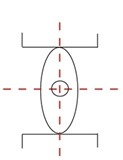
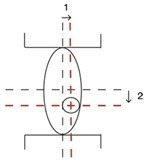

3. Triple Offset Butterfly Valves
- Design: Features three offsets, with the third being the geometrical shape of the seating surface (conical shape). This design eliminates friction between the seat and the disc during operation and allows for metal-to-metal sealing.
- Application: Suitable for extreme pressure and temperature applications, including steam, oil, and gas services. It provides reliable performance in demanding conditions.
Triple-offset butterfly valves are generally manufactured in high-grade materials like stainless steel and duplex/super duplex steel and compete with ball valves in mission-critical applications with remarkable corrosion and high temperature/pressure.
Triple-offset butterfly valves are the most sophisticated type and have gained market share in recent years, due to the dramatic performance improvement achieved by specialized manufacturers.
4. Lugged Butterfly Valves
- Design: The valve body has lugs (extensions with bolt holes) that allow it to be bolted directly to the pipe flanges. This provides a secure and rigid connection and allows for easy removal of downstream piping without affecting the upstream side.
- Application: Used in applications where the valve must be easily removed for maintenance or where the system requires dead-end service capability.
5. Wafer Butterfly Valves
- Design: Designed to fit between two pipe flanges (the wafer shape), these valves are held in place by the bolts that connect the flanges. They are compact and cost-effective but not suitable for end-of-line service where removal is necessary.
- Application: Commonly used in systems where space is limited and in applications that do not require disassembly of the pipe system for valve maintenance.
6. Rubber-Lined Butterfly Valves
- Design: Features a body and disc lined with rubber or another elastomeric material, providing enhanced corrosion resistance and a tight seal.
- Application: Ideal for handling corrosive fluids, slurries, and other abrasive media in water treatment, chemical processing, and similar industries.
7. Metal-Seated Butterfly Valves
- Design: Constructed with metal seats, these valves are designed to withstand higher temperatures and more abrasive conditions than their rubber-lined counterparts.
- Application: Suitable for high-temperature applications, such as steam services, and where higher durability is required.
Each type of butterfly valve offers unique features and benefits, making them suitable for a broad range of applications. Selecting the right type depends on factors such as the nature of the fluid, operating pressure and temperature, and specific system requirements.
A key first classification is between concentric or eccentric butterfly valves:
DIFFERENCES BETWEEN DOUBLE VS. TRIPLE ECCENTRIC BUTTERFLY VALVE
Double and triple eccentric butterfly valves are both designed to offer improved performance over traditional concentric butterfly valves, especially in high-pressure and high-temperature applications. The terms “double” and “triple” refer to the number of offsets (eccentricities) in the valve design, which significantly affect how the valve operates and seals. Understanding the differences between these two types of eccentric butterfly valves is crucial for selecting the right valve for specific operational needs.
Double Eccentric Butterfly Valves (Double Offset)
- Design: The first offset is the shaft placement off the pipe or disc centerline, which allows the disc to move off the seat upon opening, reducing wear on the sealing surface. The second offset is the shaft placement behind the disc plane, creating a cam action during operation that enhances sealing capability and reduces operating torque.
- Sealing: Typically utilizes a resilient (soft) seat, which can be made of materials like PTFE, rubber, or other polymers, allowing for tight shut-off in various applications.
- Applications: Suitable for higher pressure and temperature applications than concentric valves but below the extreme conditions that triple offset valves are designed for. Commonly used in water distribution, HVAC systems, light industrial processes, and chemical applications where a tight seal and durability are required.
Triple Eccentric Butterfly Valves (Triple Offset)
- Design: Incorporates three offsets: two similar to the double eccentric design and a third offset, which involves angling the conical shape of the seating surface. This geometry ensures that the disc only contacts the seat at the final point of closure, minimizing wear and allowing for a metal-to-metal seal.
- Sealing: The metal-to-metal seat design enables the triple offset valve to handle extreme temperatures, pressures, and corrosive media, providing a long-lasting, bubble-tight seal.
- Applications: Engineered for the most demanding applications, including high-pressure steam, oil and gas pipelines, power generation, and process industries where reliability and performance under extreme conditions are paramount.
Key Differences (Double/Triple Eccentric Types)
- Sealing Mechanism: Double eccentric valves usually have resilient seats for good sealing at lower pressures and temperatures, while triple eccentric valves use a metal-to-metal seat design for harsh conditions.
- Wear and Tear: Triple offset valves minimize wear on the sealing surfaces due to the disc only making contact at full closure, unlike double offset valves, which may experience more wear due to their soft sealing materials.
- Application Suitability: Double offset valves are versatile for a wide range of applications but might not be suitable for the highest pressures and temperatures. Triple offset valves are designed for extreme conditions where performance and durability are critical.
In summary, the choice between double and triple eccentric butterfly valves depends on the specific application requirements, including pressure, temperature, and the nature of the media being handled. Triple offset valves are typically chosen for their ability to perform in extreme conditions, offering durability and a reliable seal, whereas double offset valves provide an efficient and cost-effective solution for a broad range of less severe applications.
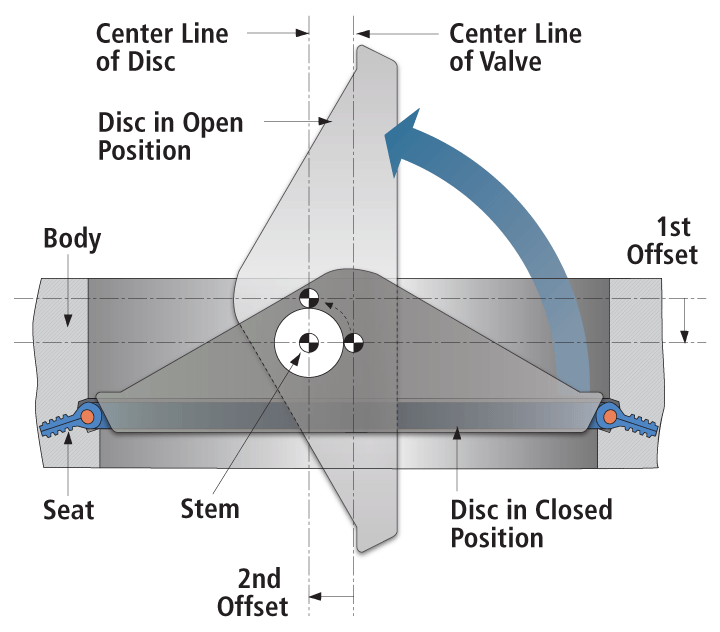 .
. 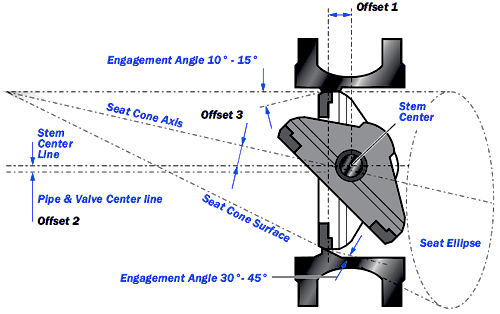
MATERIALS FOR BUTTERFLY VALVES
VALVE BODY
Butterfly valves, like any other type of valve, are available in multiple material grades and combinations of materials (body, disc, seat).
The selection of the materials is based on the fluid to be shut off, the pressure, and the temperature of the application at hand.
The body material of a butterfly valve is a critical factor that determines its suitability for specific applications, especially considering the fluid it will handle, the operating environment, pressure, and temperature conditions. Various materials are used for butterfly valve bodies, each offering different properties in terms of strength, corrosion resistance, and cost.
Here is a list of the main materials used for butterfly valve bodies, which are generally cast grades.
CAST IRON
- Properties: Good mechanical strength, excellent vibration and shock resistance, and cost-effectiveness.
- Applications: Widely used in water and wastewater treatment, air conditioning systems, and other low to medium-pressure applications.
DUCTILE IRON
- Properties: Higher strength and ductility compared to cast iron, with good corrosion resistance.
- Applications: Suitable for higher pressure applications than cast iron, including water distribution, gas supply, and some industrial processes.
Note that cast iron and ductile iron are the cast materials preferred for butterfly valves used in water treatment, distribution, and transmission.
CARBON STEEL
Carbon steel is the most common material for body and disc in oil & gas applications:
- Properties: High strength and durability, with good resistance to high pressure and temperature.
- Applications: Used in oil and gas, power generation, and other industrial applications where high-pressure and temperature resistance is required.
The most common grades used for butterfly valve bodies and discs are ASTM A216 WCB and LCC (Low Carbon Content), which are both cast types. They are used, respectively, for high-temperature and low-temperature service.
The main advantage of carbon steel (CS) butterfly valves is their relatively low cost combined with acceptable performance (especially for low-pressure applications). The weakness of carbon steel valves is their poor resistance to corrosion (which can be improved by applying external paints or internal lining materials such as Teflon)
STAINLESS STEEL
Stainless steel butterfly valves are widely utilized across various industries for their durability, corrosion resistance, and suitability for handling a broad range of fluids, including corrosive substances, water, steam, and gas. Constructed from stainless steel for both the body and the disc, these valves offer several advantages and are chosen for specific applications based on their material properties.
Advantages of Stainless Steel Butterfly Valves
- Corrosion Resistance: Stainless steel offers excellent resistance to corrosion caused by various chemicals and environmental conditions. This makes it ideal for applications in chemical processing, pharmaceuticals, and food and beverage industries, where maintaining purity is critical.
- High Strength and Durability: Provides strength and durability under high-pressure conditions, ensuring a long service life even in demanding applications.
- Temperature Resistance: Capable of withstanding both high and low temperatures, making them suitable for applications involving steam, hot fluids, or cold water systems.
- Hygienic Properties: The smooth, non-porous surface of stainless steel is easy to clean and disinfect, which is essential for sanitary applications in the food, beverage, and pharmaceutical industries.
- Aesthetic Appearance: Stainless steel has a clean and modern appearance, which is often preferred in visible installations.
Common Grades of Stainless Steel for Butterfly Valves
- 304 Stainless Steel: Offers good corrosion resistance and is widely used in general applications that do not involve exposure to corrosive chemicals and extreme temperatures.
- 316 Stainless Steel: Contains molybdenum, which enhances its corrosion resistance, especially against chlorides and other industrial solvents. It is preferred for more corrosive environments, such as seawater and chemical processing.
- 316L Stainless Steel: A low-carbon variant of 316, it has reduced carbon content that minimizes carbide precipitation during welding, improving corrosion resistance in welded joints.
Applications
Stainless steel butterfly valves are chosen for their robust performance in various settings, including:
- Chemical Processing: For controlling the flow of aggressive chemicals, acids, and solvents.
- Food and Beverage Production: In systems requiring strict hygiene standards and resistance to food acids and cleaning agents.
- Pharmaceutical Manufacturing: Where cleanliness and contamination prevention are paramount.
- Water Treatment and Distribution: Suitable for handling both clean and wastewater, as well as desalination processes.
- Oil and Gas Industry: For applications requiring resistance to corrosion from saltwater, chemicals, and high-pressure conditions.
Selection Considerations
When selecting a stainless steel butterfly valve, it’s crucial to consider:
- Type of Fluid: Ensure compatibility with the fluid’s properties, including corrosiveness, temperature, and cleanliness requirements.
- Pressure and Temperature Ratings: Choose a valve that can withstand the system’s operating pressure and temperature range.
- Connection Type: Consider the valve’s connection type (wafer, lug, flanged) for compatibility with the piping system.
- Actuation Method: Determine whether manual, pneumatic, electric, or hydraulic actuation is best suited for the application’s operational needs.
In summary, stainless steel butterfly valves offer a reliable and efficient solution for flow control in a wide range of industrial applications. Their corrosion resistance, strength, and temperature tolerance make them a versatile choice for many fluid handling systems.
DUPLEX & SUPERDUPLEX STEEL
Butterfly valves made from duplex and super duplex stainless steels are engineered for applications requiring exceptional strength and corrosion resistance, especially in harsh and aggressive environments. Duplex stainless steels combine the properties of austenitic and ferritic stainless steels, resulting in materials that offer both high strength and excellent resistance to corrosion, including stress corrosion cracking. Super duplex stainless steels provide even higher corrosion resistance and strength, making them suitable for more demanding applications.
Characteristics of Duplex and Super Duplex Stainless Steel Butterfly Valves
- High Strength: Duplex and super duplex stainless steels have higher strength compared to austenitic stainless steels, allowing for the design of thinner valve bodies and components without compromising integrity.
- Superior Corrosion Resistance: These materials are highly resistant to a wide range of corrosive environments, including those containing chlorides, making them ideal for use in marine, chemical processing, and oil & gas applications.
- Good Fatigue Resistance: The combination of strength and corrosion resistance makes duplex and super duplex valves highly resistant to fatigue, extending their service life under cyclic loading conditions.
- Resistance to Stress Corrosion Cracking: Particularly in chloride-containing environments, duplex, and super duplex steels exhibit superior resistance to stress corrosion cracking, a common issue for standard austenitic stainless steels in certain conditions.
Common Grades
- Duplex Stainless Steel (UNS S31803, S32205): Features a balanced microstructure of austenite and ferrite, offering good resistance to pitting and crevice corrosion, high strength, and good weldability.
- Super Duplex Stainless Steel (UNS S32750, S32760): Contains higher levels of chromium, molybdenum, and nitrogen, providing even greater resistance to corrosion and increased strength compared to duplex stainless steel.
Applications
Butterfly valves constructed from duplex and super duplex stainless steels are particularly suited for:
- Offshore Oil and Gas Operations: In environments exposed to seawater, sour gas, and other corrosive substances.
- Chemical Processing: For handling aggressive chemicals, especially where chloride-induced corrosion is a concern.
- Desalination Plants: Where valves are exposed to highly corrosive seawater.
- Marine Applications: Including shipping and coastal facilities, where saltwater corrosion is an ongoing challenge.
- Pulp and Paper Industry: For processes involving corrosive chemicals used in paper production.
Selection Considerations
When choosing duplex or super duplex stainless steel butterfly valves, factors to consider include:
- Corrosion Resistance Needs: Assess the specific corrosive elements present in the application environment to select the most appropriate material grade.
- Pressure and Temperature Requirements: Ensure the selected valve can withstand the operating pressures and temperatures of the system.
- Cost-Effectiveness: While duplex and super duplex steels offer superior properties, they also come at a higher cost compared to standard stainless steels. Evaluate the long-term benefits of their use in reducing maintenance and replacement costs.
- Weldability and Fabrication: Consider the welding and fabrication requirements, as duplex and super duplex materials may require specific techniques and precautions during manufacturing and installation.
In summary, butterfly valves made from duplex and super duplex stainless steels provide a robust solution for controlling flow in environments where corrosion resistance and mechanical strength are critical. Their superior properties make them an excellent choice for demanding industrial applications where conventional stainless steels might not suffice.
NICKEL ALLOY STEEL
Butterfly valves made from nickel alloys are designed for the most demanding applications, offering exceptional resistance to corrosion, heat, and pressure. Nickel alloys, such as Inconel, Hastelloy, Monel, and Nickel 200/201, are renowned for their ability to withstand extreme environments, making them ideal for critical and high-performance applications across various industries.
Characteristics
- Corrosion Resistance: Nickel alloys provide excellent resistance to a wide range of corrosive environments, including seawater, chlorine, and acidic or alkaline substances. They are particularly effective against corrosion that challenges other materials, such as stress-corrosion cracking.
- High-Temperature Performance: These alloys maintain their strength and resistance even at very high temperatures, making them suitable for applications involving heat.
- Durability: The inherent strength and corrosion resistance of nickel alloys ensure that butterfly valves made from these materials have a long service life, even in harsh conditions.
Common Nickel Alloys Used for Butterfly Valves
- Inconel (e.g., Inconel 625, Inconel 718): Known for high strength and excellent corrosion resistance, especially in high-temperature environments.
- Hastelloy (e.g., Hastelloy C-276, Hastelloy C-22): Offers outstanding resistance to strong oxidizing agents and is used in severe corrosive environments.
- Monel (e.g., Monel 400, Monel K-500): Exhibits excellent resistance to seawater and caustic environments, combining good corrosion resistance with high strength.
- Nickel 200/201: Pure nickel or nearly pure nickel, providing excellent resistance to corrosion by alkaline substances and good thermal, electrical, and magnetostrictive properties.
Applications
Nickel alloy butterfly valves are used in situations where conventional materials would fail, including:
- Chemical Processing: For handling aggressive chemicals, solvents, and gases that require superior corrosion resistance.
- Oil and Gas Industry: Especially in sour gas applications where hydrogen sulfide can cause sulfide stress cracking in other materials.
- Power Generation: In applications involving high temperatures or corrosive gases.
- Marine and Offshore: For seawater systems and environments exposed to marine atmospheres, where corrosion resistance is critical.
- Pharmaceuticals: In processes requiring clean, non-contaminating materials.
Selection Considerations
When choosing nickel alloy butterfly valves, consider:
- Specific Corrosion Resistance Needs: Match the alloy to the particular corrosive agents present in the process or environment.
- Temperature Range: Ensure the chosen alloy can withstand the operational temperature extremes.
- Pressure Ratings: Verify that the valve can handle the system’s pressure requirements without compromising its integrity or performance.
- Cost-Effectiveness: Nickel alloys tend to be more expensive than other materials, so consider the long-term benefits of reduced maintenance and replacement costs against the initial investment.
Nickel alloy butterfly valves represent a high-end solution for controlling flow in applications where extreme conditions would compromise lesser materials. Their use can significantly enhance system reliability, safety, and longevity, albeit at a higher initial cost. The choice of a specific nickel alloy should be based on a thorough analysis of the application’s requirements, including exposure to corrosive substances, temperature, and pressure conditions.
TITANIUM AND TITANIUM ALLOYS
Butterfly valves made from titanium are renowned for their exceptional strength-to-weight ratio, outstanding corrosion resistance, and excellent durability under challenging conditions. Titanium and its alloys are lightweight yet offer mechanical properties comparable to those of some steel grades, making them an excellent choice for butterfly valves in specific applications.
Characteristics
- Corrosion Resistance: Titanium is exceptionally resistant to corrosion by seawater, chlorides, and many acidic environments, making it suitable for applications where other materials might fail.
- Strength and Durability: Despite being lightweight, titanium maintains high strength and withstands extreme pressures and temperatures, contributing to the longevity of the valve.
- Non-Magnetic and Biocompatible: Titanium is non-magnetic and biocompatible, expanding its use to applications where magnetic interference is a concern or where it contacts biological materials.
- Temperature Resistance: Titanium valves can operate effectively across a broad temperature range, maintaining their integrity in both low and high-temperature environments.
Applications
Titanium butterfly valves are ideal for industries and applications that demand material properties beyond what conventional metals can provide, including:
- Chemical Processing: For handling highly corrosive substances, such as chlorine and acids, where titanium’s corrosion resistance ensures reliability and safety.
- Seawater and Desalination: In seawater desalination plants, offshore platforms, and marine applications, where the resistance to seawater corrosion is critical.
- Pharmaceutical and Food Processing: Where the non-toxic and biocompatible nature of titanium is essential for avoiding contamination.
- Aerospace and High-Performance Engineering: In applications requiring materials that can withstand high temperatures and pressures without significant weight penalties.
Selection Considerations
When selecting titanium butterfly valves, consider the following factors:
- Grade of Titanium: Various grades of titanium offer different properties. For example, Grade 2 titanium is commercially pure and widely used for general corrosion resistance, while Grade 5 (Ti-6Al-4V) is an alloy known for its higher strength and used in more demanding applications.
- Cost: Titanium is more expensive than many other materials due to its processing complexity and raw material costs. Consider the long-term benefits of reduced maintenance and longer service life against the initial investment.
- Compatibility: Ensure the specific grade of titanium chosen is compatible with the fluid media, operating conditions, and environmental exposure of the application.
- Fabrication and Repair: Consider the availability of resources for fabrication and repair, as working with titanium requires specific expertise and equipment.
Titanium butterfly valves represent a high-end solution for controlling flow in demanding applications where conventional materials are inadequate. Their selection is justified in environments that require exceptional corrosion resistance, strength, and durability, despite their higher initial cost. The benefits of using titanium include extended equipment life, reduced maintenance, and improved safety and reliability in critical applications.
ALUMINIUM
- Properties: Lightweight, good corrosion resistance, and ease of machining.
- Applications: Primarily used in low-pressure applications, such as air handling, vacuum services, and dry bulk handling.
BRONZE
- Properties: Good corrosion resistance, especially against seawater and other saline solutions.
- Applications: Used in marine, desalination, and certain chemical processing applications where corrosion resistance is paramount.
NICKEL ALUMINIUM BRONZE
This is a copper alloy that contains approximately 10% aluminum, 5% nickel, and 5% iron. It features strong corrosion resistance, especially in seawater applications, and resists the formation of a biofilm, a frequent cause of corrosion problems for stainless steels.
Butterfly valves API 609 may have soft or metal seats. Valves with soft seats are also called “soft-seated” or “resilient” butterfly valves and are of the centric type. Eccentric designs (double or triple offset) are available, generally, with metal seat designs, which could also be fireproof.
For less critical applications, butterfly valves are also available in plastic-grade materials, such as PVC, CVPC, Polypropylene (PP), and Polyethylene (PE). Here are the main features of plastic butterfly valves:
PVC
- Properties: Excellent corrosion resistance to a wide range of chemicals, lightweight, and cost-effective.
- Applications: Suitable for low-pressure applications, including water treatment, chemical processing, and irrigation systems.
CPVC
- Properties: Similar to PVC but can withstand higher temperatures.
- Applications: Used in hot water distribution, and chemical processing where higher temperature resistance than PVC is needed.
PP/PE
- Properties: Excellent chemical and corrosion resistance, lightweight, and suitable for a wide range of temperatures.
- Applications: Chemical processing, water treatment, and applications involving aggressive or corrosive fluids.
VALVE SEAT
SOFT SEATED BUTTERFLY VALVE (“RESILIENT”)
Soft-seated butterfly valves are designed to provide a tight seal and are typically used in applications where the sealing of gases or liquids is critical and where the operating conditions are within moderate temperature and pressure ranges. The “soft seat” refers to the use of elastomeric or other non-metallic, resilient materials for the sealing mechanism between the disc and the valve body, enhancing the valve’s ability to create a tight shut-off.
Key Features
- Sealing Material: The soft seat is usually made from materials such as PTFE (Polytetrafluoroethylene), NBR (Nitrile Butadiene Rubber), EPDM (Ethylene Propylene Diene Monomer), or Viton (a type of fluoroelastomer). Each material offers different properties in terms of chemical resistance, temperature tolerance, and wear characteristics, making them suitable for various applications.
- Tight Shut-Off: Soft-seated butterfly valves are known for their excellent sealing capabilities, providing a near bubble-tight closure. This makes them ideal for applications requiring precise control over the flow and leakage prevention.
- Low Torque Operation: The soft seating material reduces the friction between the disc and the seat, allowing for easy operation with minimal torque requirements.
- Application Versatility: These valves are used in a wide range of applications, from water and wastewater treatment to chemical processing, food and beverage, and HVAC systems, handling a variety of fluids, including corrosive and abrasive media.
Applications
Soft-seated butterfly valves are versatile and can be employed in various industrial and commercial applications, including:
- Water and Wastewater: For controlling and regulating water flow in treatment plants, distribution systems, and irrigation.
- Chemical Processing: Handling mild to moderately corrosive fluids, depending on the seat material’s chemical compatibility.
- Food and Beverage: In processes requiring sanitary conditions, where non-toxic and cleanable sealing materials like PTFE are essential.
- Air and Gas Handling: For applications involving air, natural gas, and other gases where a tight seal is crucial to prevent leakage.
Considerations
While soft-seated butterfly valves offer many advantages, there are considerations to keep in mind when selecting them for specific applications:
- Temperature Limits: The elastomeric and plastic materials used for the seats have upper temperature limits, beyond which they may degrade or lose their sealing properties.
- Chemical Compatibility: It’s essential to ensure that the seat material is compatible with the process fluid to prevent damage and ensure long-term reliability.
- Wear and Tear: While soft seats provide excellent sealing, they may be more prone to wear and damage from abrasive media than metal-seated valves.
In summary, soft-seated butterfly valves offer excellent sealing capabilities and are suitable for a wide range of applications requiring precise flow control and tight shut-off. Selecting the appropriate seat material based on the application’s specific requirements is crucial for optimal performance and longevity.
Soft seated butterfly valves (resilient) feature EPDM, VITON, NBR, BUNA-N, and similar soft seats. Soft-seat butterfly valves are generally of the concentric type and suit low-pressure and non-critical applications
METAL SEATED BUTTERFLY VALVE
Metal-seated butterfly valves are designed for more demanding applications where high temperatures, higher pressures, and abrasive or corrosive media are present. Unlike soft-seated valves, which use elastomeric materials for sealing, metal-seated valves rely on metal-to-metal contact between the disc and the seat, providing durability and resistance in harsh conditions.
Key Features
- Durability: Metal seats are highly durable and resistant to wear, making them suitable for applications involving abrasive particles or high-velocity flows that could damage softer seat materials.
- High Temperature and Pressure Resistance: Metal-seated butterfly valves can withstand higher temperatures and pressures than their soft-seated counterparts, making them ideal for industrial processes involving steam, hot gases, or high-pressure fluids.
- Corrosion Resistance: Depending on the metals used (such as stainless steel, Hastelloy, Inconel, or others), these valves offer excellent resistance to corrosion and chemical attack.
- Leakage: Metal-seated valves may not provide the same level of tight shut-off as soft-seated valves. They are generally designed to meet industry standards for acceptable leakage rates under specific conditions, which is often sufficient for many high-temperature and high-pressure applications.
Materials for Metal Seats
The choice of materials for metal seats in butterfly valves is critical for ensuring the valve’s durability, performance, and resistance to the operating environment’s conditions, such as temperature, pressure, and corrosion. Here are some commonly used materials for metal seats in butterfly valves, along with their characteristics and applications:
1. Stainless Steel
- Characteristics: Stainless steel offers excellent corrosion resistance, strength, and temperature resistance. Common grades used include 304, 316, and 316L, with 316/316L being preferred for better corrosion resistance due to their molybdenum content.
- Applications: Widely used in water and wastewater treatment, food and beverage processing, and chemical industries where corrosion resistance is essential.
2. Carbon Steel
- Characteristics: Carbon steel provides good strength and thermal properties at a lower cost than stainless steel but is more susceptible to corrosion. It is often protected with coatings or treatments.
- Applications: Suitable for applications where corrosion is not a significant concern, such as in certain oil and gas or power generation processes.
3. Alloy Steel
- Characteristics: Alloy steels, such as Chrome-Moly (e.g., A182 F22), are used for their enhanced strength, durability, and resistance to high temperatures and pressures.
- Applications: Ideal for high-temperature and high-pressure applications, including steam service, boiler feed water, and thermal oil systems.
4. Titanium
- Characteristics: Titanium and its alloys offer exceptional corrosion resistance, especially to chlorides, along with high strength-to-weight ratios and excellent temperature tolerance.
- Applications: Used in seawater, brine, and other corrosive environments, including chemical processing, desalination, and marine applications.
5. Hastelloy
- Characteristics: Hastelloy alloys are nickel-based and known for their outstanding resistance to severe corrosive environments, including strong acids.
- Applications: Suitable for aggressive chemical applications, such as handling sulfuric acid, hydrochloric acid, and chlorine.
6. Inconel
- Characteristics: Inconel alloys are nickel-chromium-based and are known for their ability to withstand extreme temperatures, oxidation, and corrosion.
- Applications: Used in high-temperature applications, such as heat treating equipment, gas turbine components, and nuclear reactors.
7. Monel
- Characteristics: Monel alloys are nickel-copper-based and offer excellent corrosion resistance, especially to saltwater and acidic conditions.
- Applications: Ideal for marine, chemical, and hydrocarbon processing where high corrosion resistance is required.
8. Bronze
- Characteristics: Bronze, particularly aluminum bronze, provides good corrosion resistance, especially against seawater and other mildly corrosive environments.
- Applications: Commonly used in water, gas, and some chemical applications where its corrosion resistance and strength are beneficial.
1. Polytetrafluoroethylene (PTFE) Coating
- Characteristics: PTFE, or Teflon, offers excellent chemical resistance and a low coefficient of friction, minimizing wear on the seat.
- Applications: Suitable for chemical processing industries, food and beverage, and any application requiring high chemical resistance and non-stick properties.
2. Reinforced PTFE (RPTFE)
- Characteristics: RPTFE includes a filler (usually glass or carbon) to improve the material’s strength, wear resistance, and dimensional stability.
- Applications: Used in applications where pure PTFE’s properties are desired but with enhanced durability and reduced deformation under load.
3. Nylon Coating
- Characteristics: Nylon provides good wear resistance and strength, along with excellent resistance to certain chemicals.
- Applications: Common in oil and gas applications and other areas where the seat may be exposed to hydrocarbons and where impact resistance is beneficial.
4. Elastomeric Coatings (EPDM, NBR, Viton)
- Characteristics: Rubber materials like EPDM (ethylene propylene diene monomer), NBR (nitrile butadiene rubber), and Viton (fluoroelastomer) offer good sealing capabilities, flexibility, and, in the case of Viton, high-temperature and chemical resistance.
- Applications: Chosen based on their compatibility with the fluid medium. EPDM is suitable for water and mild chemicals, NBR for oils and fuels, and Viton for high-temperature and chemical applications.
5. Stellite Overlay
- Characteristics: Stellite is a cobalt-chromium alloy known for its excellent wear and corrosion resistance, as well as its ability to perform under high temperatures.
- Applications: Ideal for severe service applications, such as those in the power generation and oil and gas industries, where valves are subject to high wear and harsh conditions.
6. Electroless Nickel Plating
- Characteristics: Provides a uniform and corrosion-resistant coating that also offers good wear resistance and hardness.
- Applications: Used in a wide range of applications, including water and wastewater treatment and processing industries, for general corrosion protection.
7. Ceramic Coating
- Characteristics: Ceramic coatings provide exceptional hardness, wear resistance, and thermal protection.
- Applications: Suitable for extreme wear and high-temperature applications, such as in the mining and minerals processing industry.
8. Chrome Plating
- Characteristics: Chromium plating enhances surface hardness, wear resistance, and corrosion protection.
- Applications: Applied in industrial applications where durability and longevity of the seat are critical.
Applications
Metal-seated butterfly valves are chosen for their robustness in challenging environments, including:
- Power Generation: For handling steam and high-temperature water in cooling systems and boilers.
- Chemical and Petrochemical Industries: In processes involving corrosive fluids, high temperatures, and where valve durability is crucial.
- Mining and Minerals Processing: For slurry and abrasive material handling where valve wear is a concern.
- Pulp and Paper Manufacturing: In applications involving high-temperature liquids and corrosive chemicals used in the pulping process.
Considerations
When selecting a metal-seated butterfly valve, several factors should be considered to ensure it meets the application’s needs:
- Sealing Requirements: While metal-seated valves are durable and handle extreme conditions, they might not achieve the absolute tight shut-off possible with soft-seated valves. Consider the application’s leakage tolerance.
- Material Compatibility: Choose a valve body and seat material that is compatible with the process media and conditions to ensure long-term reliability and performance.
- Operational Torque: Metal-to-metal seating can require higher torque to operate the valve, impacting actuator selection and operational energy costs.
- Cost: Metal-seated valves, especially those made from exotic alloys for enhanced corrosion resistance, can be more expensive than soft-seated valves. However, their durability in harsh conditions may offer a lower total cost of ownership over time.
In summary, metal-seated butterfly valves are an excellent choice for industrial applications that demand high durability, temperature resistance, and the ability to handle abrasive or corrosive media. Proper selection of valve materials and understanding the specific operational requirements are key to maximizing the performance and lifespan of these valves in demanding environments.
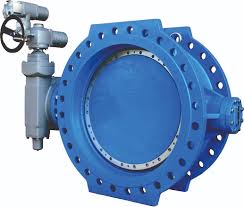
Double offset and triple offset butterfly valve (metal seated)
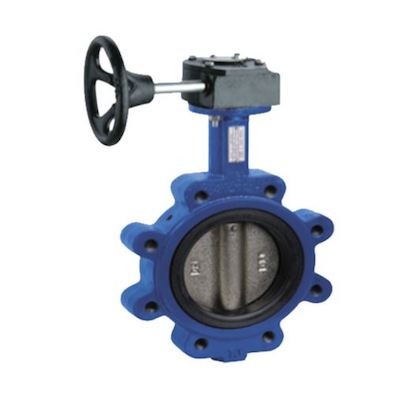
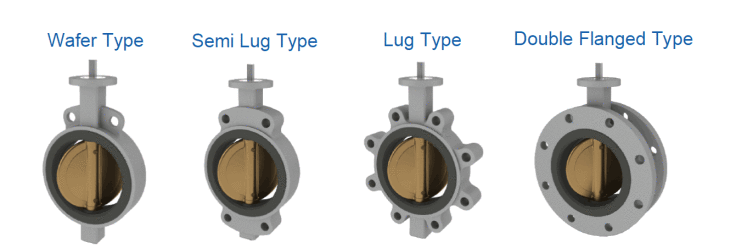
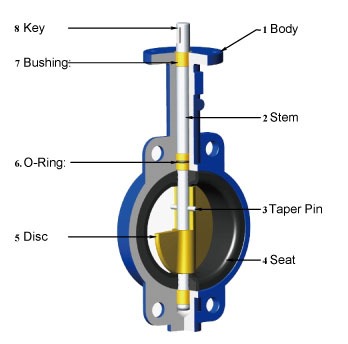





9 Responses
Can you offer us the goods as below?
line1 2pcs
BUTTERFLY VALVE STD: API 609
CL 150Ib,BODY: ASTM B148 GR C95800 TRIM: AL-
BRONZEPTFE END CONNECTION:WAFER TYPE SIZE: 16”
line2 3pcs
BUTTERFLY VALVE STD: API 609, CL
300lb,BODY: ASTM B148 GR C95800 TRIM: AL-BRONZE,PTFE END CONNECTION: WAFER TYPE SIZE: 14”
line3 1pcs
BUTTERFLY VALVE STD: API609.CL
300lb,BODY: ASTM B148 GR C95800 TRIM: AL-BRONZE,PTFE END CONNECTION: WAFER TYPE SIZE: 4”
Dear Sir/Madam,
We request your quote for the items below
If you are interested in providing the required information, please send us the filled out Terms of Reference
Offer must include specifications or catalogue
We highly appreciate your prompt assistance and cooperation.
6″ Butterfly Valves Model AV -CWR / Valve No- UW204/Press- 16 bar/ Class – ASME B 16 5 150LB/ Disc-AL-BRZ/
Seat-EPDM/Steam- Al- BRZ/Design- API 609/ Brand – ACE Valves
Qty 6 EA
BALL VALVES
BUTTERFLY VALVES ( Manual/Gear operated/Motorised)
DAMPER VALVE ( Manual/Gear operated/Motorised/Pneumatic)
KNIFE EDGE GATE VALVES ( Manual/Gear operated/Motorised/Pneumatic)
GATE VALVE ( Manual/Gear operated/Motorised)
CHECK VALVE
CONTROL VALVES
SAFETY VALVES
FOOT VALVE
PFA/PTFE LINED VALVES
VISIT OUR WEBSITE: http://www.hubluxe.com
MOB.NO.8652075992
Would there be a procedure for inline field seat testing?
Hi Sr.
I am looking for a 4 inch normally closed flange butterfly fire safe valve
with independent hydraulic actuator (internal storage and manual reset)
12,5 Bar. This is for a fuel loading skid, as a fire protection.
What do you recommend: Flanged? Double offset? Triple offset?
Looking for Double eccentric butterfly valve
Body in doube flanged Duplex St st
Disc in Duplex st st
Shaft in Duplex st st
sizes 300 mm to 1200 mm
PN 16
medium is seawater
AIV BFV10 Model Butterfly Valve incorporates the optimum design features to provide long trouble free service in the field. This general purpose soft seated Butterfly valve has a fully rubber lined single piece body with centric disc construction and is available in wafer type body pattern.
http://amcovalves.com/products/butterfly-valves-pn-10/
Hi,Dear Sales Manager,
How are you ? So glad your can open my email.We hope it is a good chance for both of us open the business cooperation.
Tianjin Fortis valve co., LTD. Was set up in 2000, is located in Tianjin in northern of China. We have the advanced machining equipment and coating processing line, We have our own Machining shop, painting shop and assembled shop. We can ensure you the best price and delivery. We export to UK,Italy, Turkey, Russia, HK,Korea etc.
Product Range:
Butterfly Valves (wafer Type/ Lugged Type/ Double Flanged/Double eccentric and triple eccentric type)
Dual Disc Check Valves
Gate valves( soft seat )
Standard: DIN PN10/PN16, ANSI150,BS 10,TABLE E, JIS 10K etc.
Material: Ductile Iron, Cast Iron, CF8(SS304),CF8M(SS316),2207/2507,Aluminum bronze ,Carton Steel etc.
Thanks for your time again and Really hope we can have the chance to do business the basis of equality and mutual benefit.
Best Regards,
Alice Summer
Mobile/Whatsapp+8615522861153
Email:sales@fortisvalve.com
Tianjin Fortis Valve Co., Ltd.
Buy Butterfly Valves for Effective & Regulated Fluid Flow.